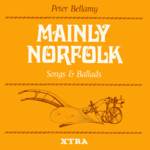> Maddy Prior > Songs > In the Company of Ravens
In the Company of Ravens
This is a song-cycle with six songs based around the culture of our portentous friend, the raven. It was inspired by Maddy Prior’s work on a TV documentary and was released in 1999 on her album Ravenchild. The first two songs of this song cycle, In the Company of Ravens and Young Bloods, were later included in the Maddy Prior anthology Collections: A Very Best of 1995 to 2005.
In the Company of Ravens
[Maddy Prior]
Maddy Prior commented in the album’s sleeve notes:
Ravens are renowned as highly intelligent birds in all cultures. They are very astute scavengers and are found in every terrain from ice covered regions, through forest to the desert. In Europe they are largely regarded as birds of ill omen and, possibly due to the ancient celtic influence and their connection to carrion, are associated with death. In other cultures, namely the Native American tradition, the Raven is seen more in the role of the trickster and / or creator, due to their playful and innovative qualities.
Lyrics
Sorry, I can't show the lyrics here as I don't have the copyright owners' permission to publish them. But please feel free and ask me to send you the song's lyrics.
Young Bloods
[Maddy Prior]
Maddy Prior commented in the album’s sleeve notes:
Bernd Heinrich wrote a classic book, Ravens in Winter, the result of some extraordinary research. Ravens leave their parents at the end of the first year, but don’t mate until they are four or five years old, and then they mate for life, which could be as long as forty years. In those years of adolescense, to feed they have to gather into gangs to be able to approach feeding grounds, e.g. carcasses, of they will be driven off by the local, more powerful, mated pair. This song blithely sums up hundreds of hours of raven watching.
The Masts of Morrigan
[Maddy Prior]
Maddy Prior commented in the album’s sleeve notes:
The Morrigan was the ancient irish celtic goddess of battle. She was supposed to be able to transform into a raven, creatures that were always to be found at the scene of carnage, in search of food. They are so clever that they have learnt to not only respond to carcasses, but to anticipate them by following the hunters. So they will follow packs of wolves or soldiers, even lately having learnt to fly towards the sound of guns, knowing that modern hunters cut the entrails from their prey on the spot.
The ancient celts believed in the sacred qualities of the head, where they believed that the soul resided. This cult of the head meant not only that they revered the skulls of their ancestors but also that they decapitated their enemies and put the heads on poles around their camps. These were known as the masts of Macha, or Morrigan. Here is a description of the Morrigan - also known as Macha or Badb, she being a triple goddess: “Now when they were there they saw coming to them towards the hostel, a big-mouthed black swift sooty woman, lame and squinting with her left eye. She wore a threadbare dingy cloak. Dark as the back of a stag beetle was every joint of her, from the top of her head to the ground. Her filleted grey hair fell back over her shoulder. She leant her shoulder against the door-post and began prophesying evil to the host, and to utter ill words from Da Derga’s hostel.”
Bernard Leak commented in an e-mail to me:
I’d avoid references to “triple goddesses” if you want to keep your head. There is, as far as I know, no evidence of “triple goddesses” at any period in Celtic religion, despite a certain liking for organising things in threes as a rhetorical device.
Rich Pickings
[Prior]
Maddy Prior commented in the album’s sleeve notes:
Their scavenging abilities have been developed almost to an art form, and at the town of Ely in the USA they have been encouraged by the locals and descend in great numbers on the catering facilities. In England the health and safety laws have served to diminish the numbers of ravens because dead sheep are removed from, or buried in, the fields. The farmers are generally pleased by this, since ravens will attack s young lamb directly after it is born, when it is helpless and its mother less capacitated. Ravens consider the eyes and tongues a particular delicacy.
Ravenchild
[Prior]
Maddy Prior commented in the album’s sleeve notes:
With all the associations of darkness and the trickster, it is easy to lose sight of the softer, more generous side of their nature. They are often to be seen in the wild, rubbing beaks and canoodling with their life’s partner, using their extensive vocabulary to “whisper sweet nothings” in a strangely anthropomorphic way.
Dance on the Wind
[Prior]
Maddy Prior commented in the album’s sleeve notes:
During the years of adolescence the males spend their time perfecting the skills necessary to attract a mate. One of these skills is aerial acrobatics. They alone among the corvids have a delight in spectacular flying displays, plunging from great heights, wheeling and turning, later to synchronise with their mate. They appear to do this, not only as a courting ritual, but just for the sheer fun of it.

